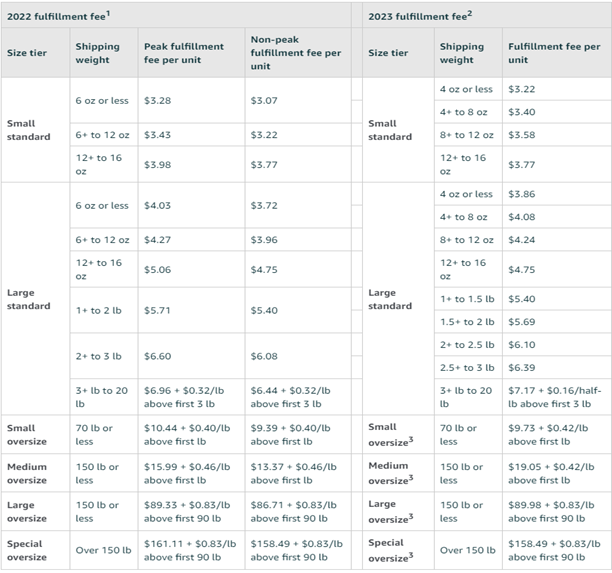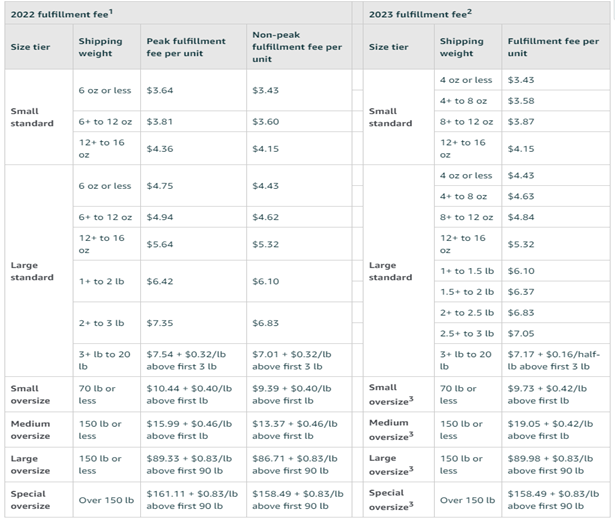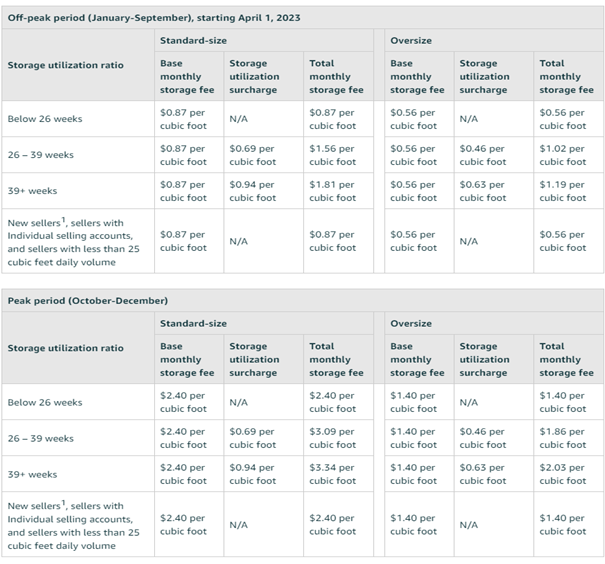Over the last several years, we have seen Amazon increase their Referral Fees and FBA Fees yearly for sellers, and that is no different this year.
November 17, Amazon announced that starting on January 17, 2023, their fee changes will go into effect as a response to increased fuel prices and inflationary pressures that the economy is experiencing. Below, we outline what the fees currently are, what is changing, and what Sellers should start looking at in preparation for the change.
What are referral and FBA fees?
Referral fees are fees that sellers pay to Amazon per item sold, which ranges depending on category and price of the item. Referral fees cover traffic sellers receive by selling their products on Amazon.com. Essentially, referral fees are the price that a seller pays Amazon for selling the product on their platform.
FBA Fulfillment Fees are fees that sellers pay which cover the costs associated with picking, packing, and shipping out for products via FBA. It is a flat fee charged on a per unit basis and determined by size and weight.
How are fees changing?
Referral Fees
No changes were made to referral fees for 2023. Find your categories(s) and associated referral fees by reading the Fee Category Guidelines Help Page.
FBA Fees
Overall, FBA fees have increased in all size tiers. However, Amazon has furthered their breaking out of size tier classifications and is getting more granular in how they are classifying items, as well as what they are charging for those items. For example, the large standard size historically has had 6 weight tiers, and Amazon has increased this to 9 tiers, allowing them to be more precise with their charges.
Below is a table showing the changes to FBA Fulfillment Fees (Excluding Apparel) from 2022 to 2023:

Here are the changes for the apparel category:

One additional thing to note is that Amazon has removed the Peak Fulfillment Fee column from their help pages moving into 2023. Some sellers are speculating that Amazon could be doing away with the Peak Fee all together, but we are assuming that these fee increases will be released in Q2 of 2023.
Additional Fee Changes: Amazon is also changing how they calculate FBA Monthly Storage Fees starting April 1, 2023. These fees will begin to be charged based on “Peak” or “Non-Peak” periods, and sellers will be charged accordingly, following the below guidelines:

The FBA monthly storage fees more than double during the months of October-December, so it’s important to budget for that, and take this into account when figuring out your profit margins, product pricing, and bottom line.
Some other changes taking place in 2023 around fees:
- Amazon is doing away with the Fuel and Inflation Surcharge and has decided to increase other FBA Fees to make up for the difference. This simplifies fees for Amazon but does not provide much benefit to the seller, as the impact of the fee remains.
- Amazon is reducing the Return Processing Fee by $0.20 on average per return.
- Coming April 1, 2023, Amazon will be introducing a new Fee: A Storage Utilization Surcharge which will impact an estimated 7.5% of “sellers who use the highest volume of storage relative to their sales volume” (we will release more on this in the coming months – be on the lookout for an additional article).
- A new Aged Inventory Surcharge will be introduced in April 2023 for certain categories
Amazon will increase the cost to Remove or Dispose Inventory. Costs associated with Liquidating inventory remain the same.
How can sellers calculate the impact?
Sellers should make it a priority to review the new fees and calculate the impact on the business quickly. We recommend running a full audit of your catalog, alongside these new fees to determine profitability and margin on your assortment, as it is possible that these fees may force sellers to adjust their business model on specific SKUs.
Amazon gives sellers certain reports that help to make this exercise easier; we recommend using the FBA Fee Preview Report to understand current classifications and fees on your products, the Aged Inventory Report, and the Monthly Storage Fees report to calculate current fees, and then drop in the expected fees based on the table above to determine the impact of the new fees on your business.
With the constant updates in online marketplaces, it’s important to stay up to date with the latest changes. If you are a client looking for additional information, contact your account team for more info. If you are interested in learning more about how Retail Bloom can assist your brand efforts in online marketplaces, schedule a consultation with our team.
For more updates on marketplaces, visit our full Marketplace Updates content gallery.








.png)
.png)
